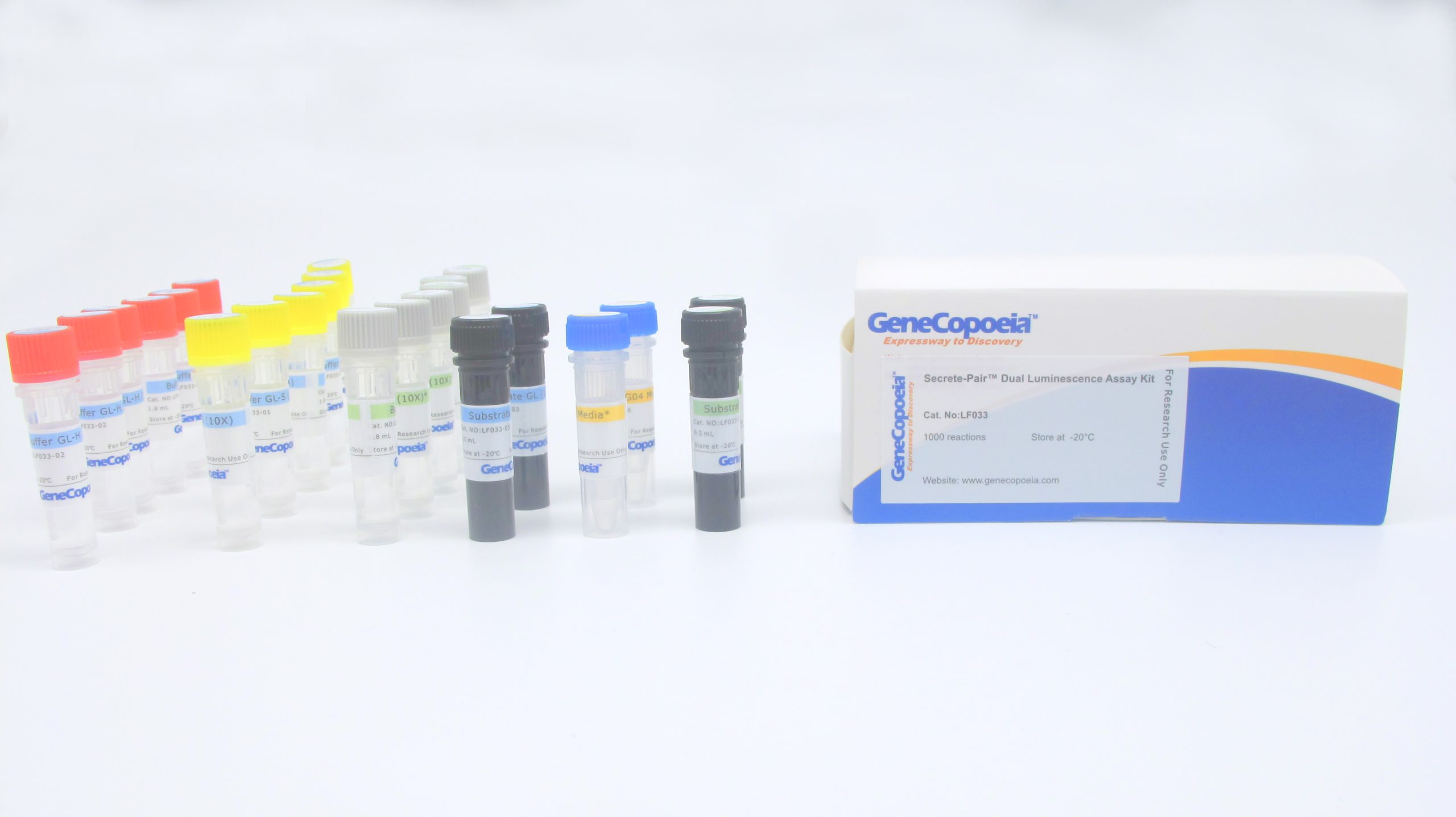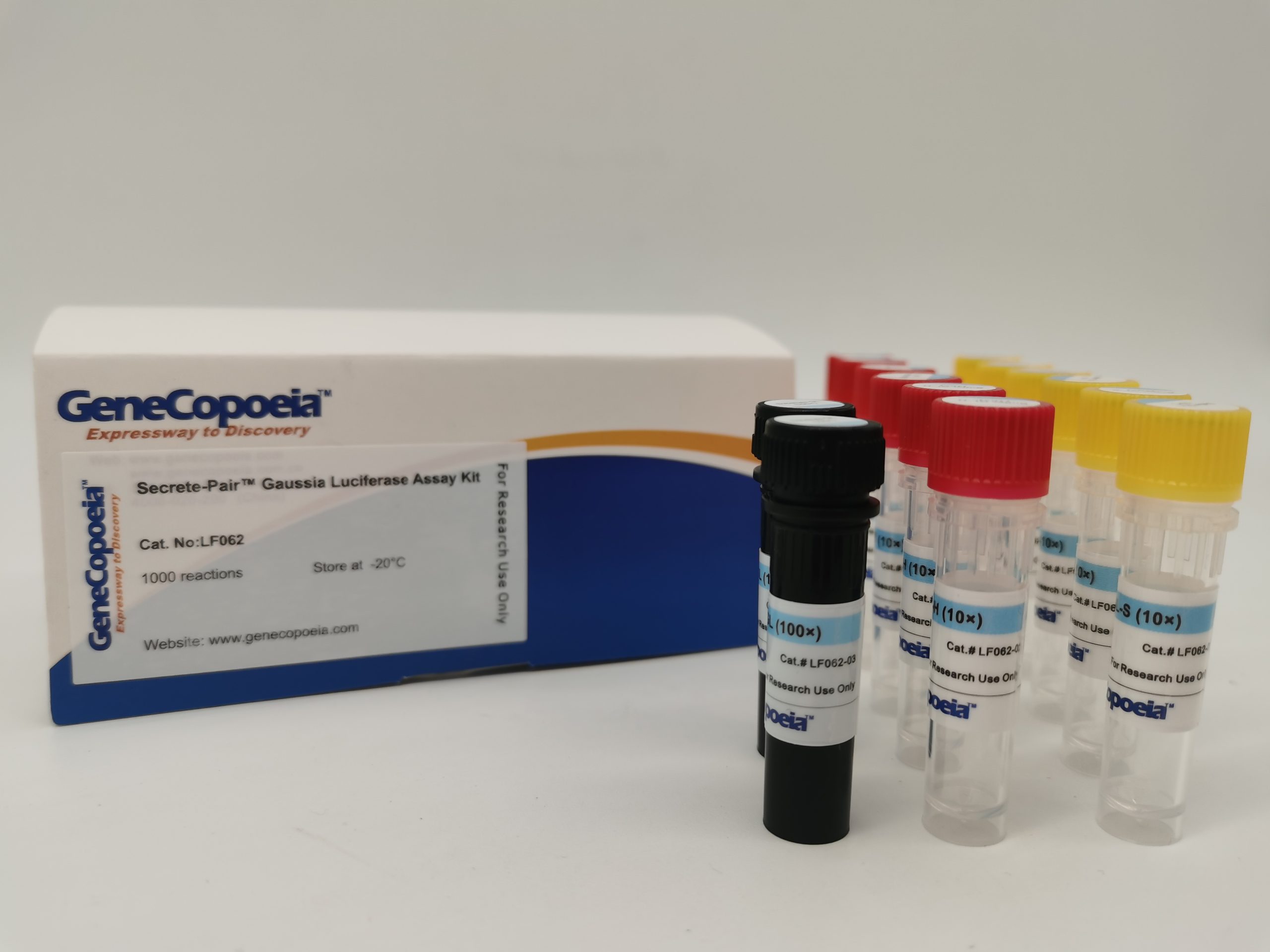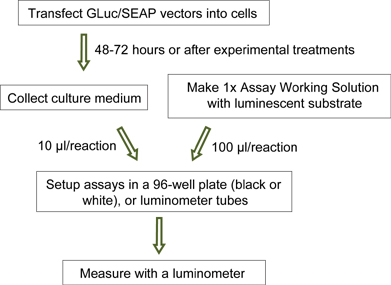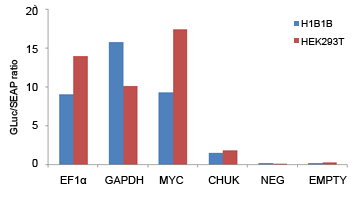*Promotions are valid in the US & Canada only. For international customers, please contact your local distributors. Promotion ends July 31, 2025. Discounts are not valid on previous purchases and cannot be combined with additional discounts.
Secrete-Pair™ Gaussia Luciferase Dual and Single Luminescence Assay Kits
GeneCopoeia’s Secrete-Pair™ Dual Luminescence Assay Kit is designed to analyze the activities of Gaussia Luciferase (GLuc) and Secreted Alkaline Phosphatase (SEAP) in a dual-reporter system. Both GLuc and SEAP are secreted reporter proteins, permitting detection without cell lysis. Secrete-Pair measures dual reporter signals and allows transfection normalization. A single GLuc reporter system is also available.
Advantages
• Live cell assays. Secreted GLuc and SEAP make cell lysis unnecessary. The same sample can be assayed multiple times for different time points, environmental conditions, etc., reducing sample-to-sample variation. Ideal for high-throughput applications.
• Dual-reporter detection. SEAP allows normalization of GLuc signal for greater accuracy.
• Sensitive and robust system. GLuc is 1,000 times more sensitive than firefly and Renilla luciferases.
• Flexible assay conditions. Two robust buffer conditions are provided for GLuc assays: 1) Buffer for greater stability retains more than 90% of signal within the first 10 minutes, extending the half-life of luminescence to 30 minutes; 2) Buffer for higher sensitivity for detecting low GLuc expression.
• Clone and vector compatibility. Compatible with GeneCopoeia’s GLuc-ON™ promoter reporter clones, miTarget™ miRNA target clones, GLuc-ON™ Transcriptional Response Element (TRE) clones, and cloning vectors.

-scaled.jpg)







